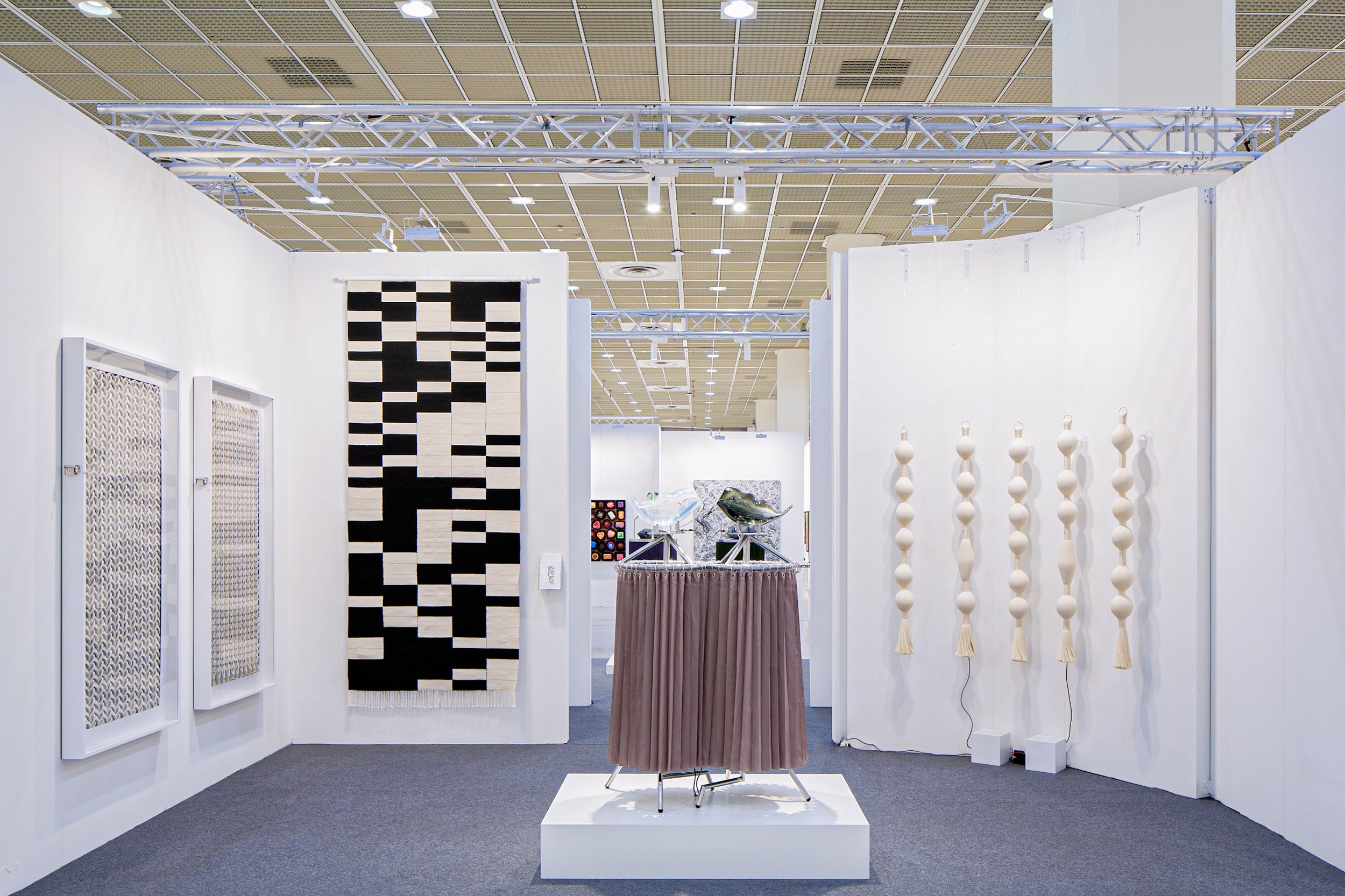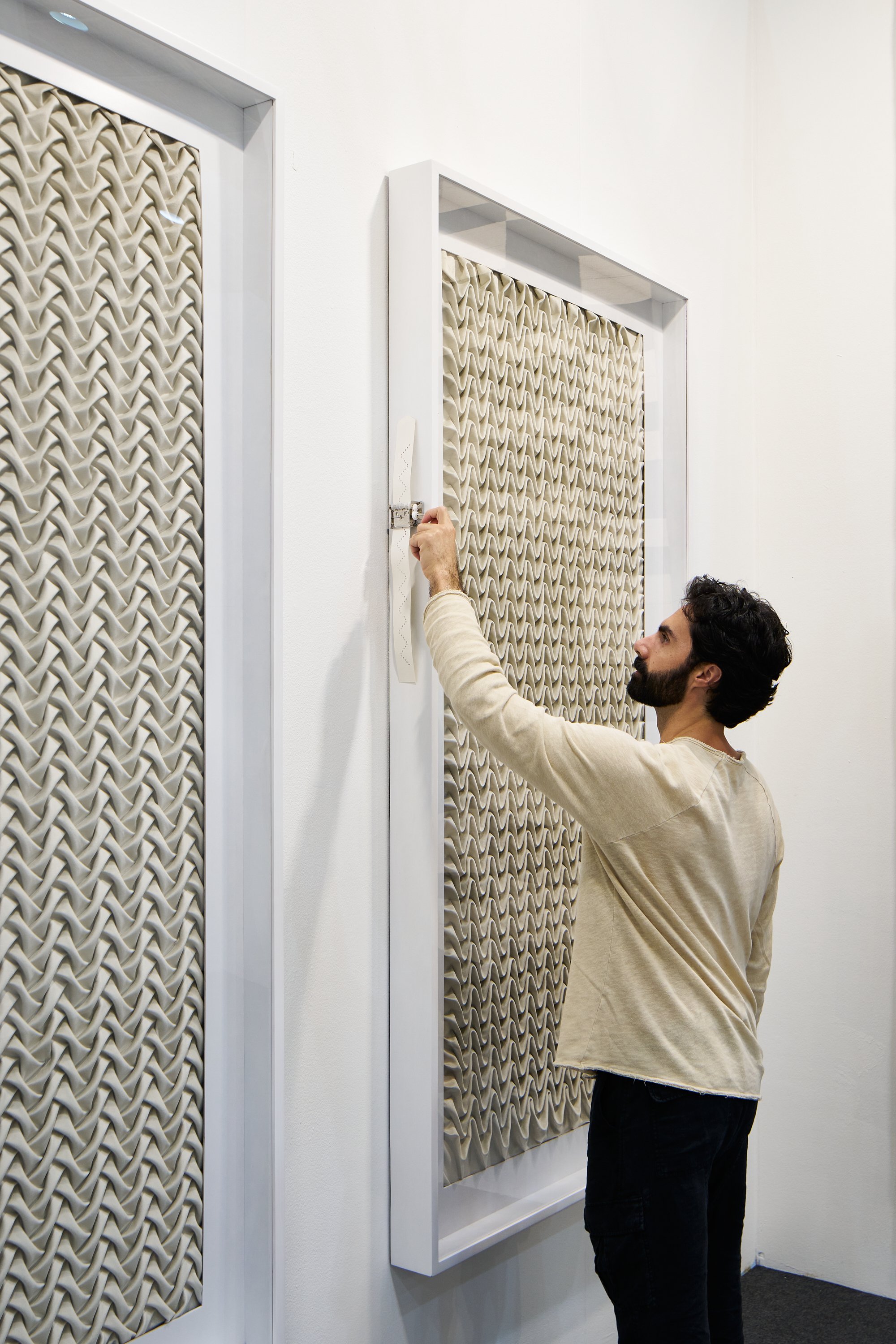KIAF Seoul
AMOR MUÑOZ solo booth
Sep 6, 2023
Marking its debut at KIAF this year, Colector is delighted to present a solo exhibition by Mexican artist Amor Muñoz (b. 1979). Muñoz's work delves into the intersection between art, technology, and society. With over a decade of exploration, she has set forth her work in crafts, experimental electronics, and notably, electronic textiles. This fusion of technology and craftsmanship has birthed several lines of work and research into distinct series displayed at the Colector booth during the fair.
For the booth’s design, Colector was inspired by the Taegeukgi, which has long been a commonly used motif in Korea, denoting the harmony between the negative and positive cosmic forces, and integrated this into the floor plan. The four series presented are specific representations of the movement and harmony of the aforementioned forces.
One of these series is Notes and Folds, a project that intertwines sound with shape, harmonizing digital coding and handcrafting into musical and textile patterns. Inspired by the musical compositions of Morton Feldman, who based several of his compositional techniques on the asymmetrical patterns of Persian rugs (i.e. Coptic Light for orchestra), and Conlon Nancarrow’s punched paper rolls that encoded music by hand for piano players, Muñoz creates sound-textile installations and wall pieces, in which the hand-pleated patterns are translated into musical notes, hence transforming the textile into a score.
Exhibiting a polished, futuristic aesthetic, the Hybrida series is a standout. The project speculates on novel life forms by uniting biological and technological elements. The exhibition boasts three sound bio-sculptures, each housing living organisms (SCOBY) engaged in continuous fermentation. The SCOBY (Symbiotic culture of bacteria and yeast) used in these installations was provided by Chef Kang Byung-wook from Jeju Island’s iconic Last Spring Restaurant, which specializes in concocting dishes that feature local farmers and regional products. Sensors translate biological activity into auditory data, creating an environment of gastric and intestinal sounds. These audio expressions encapsulate organic processes through technological language.
Inspired by some ideas from Nam June Paik and Jana Sterbark, Chimera, Expanded Bodies’s Oracle works point to a biotechnological poetic exploration that questions how we define life, what its borders and possibilities are, placing the hybrid as a central point to destabilize binary constructions such as the organic and inorganic, biological and synthetic, the body and the machine. Chimera, Expanded Bodies is a sound installation made up of a set of bio automata, artificial entities that contain living matter and generate performative gestures through their biological process, which is monitored by sensors. These bodies react to the public detecting CO2 concentrations through a gas sensor that sends data that determines the respiratory rate of the bio-sculpture. Abstract bodies in which the heartbeat, the pulse, the circulation, the breathing, and the nervous system are synthesized in a hybrid, post-humanist entity that obeys the stimuli of other bodies.
On its part, the Memory and Matter series envelops the audience, pondering coding systems, language, and memory. Drawing inspiration from the magnetic core memories of 1950s and 1960s computers and Anni Albers' works, Muñoz crafted a graphic binary code language during her Bauhaus Dessau Foundation residency. Utilized in textile works and spatial interventions, this language embeds encoded information, including expanded memories and interactive elements.
Editorial highlights of our participation:
ARTNET
South Korea’s Homegrown Fair, Kiaf Seoul, Strives to Win the Hearts of a Growing International Art Crowd
Experimental works with a biological bent stood out amid the commercial pieces dominating the regional fair.
https://news.artnet.com/market/kiaf-seoul-2023-2359105
OCULA
In Frieze Seoul’s Shadow, Kiaf Features Memorable Works
With over 330 galleries exhibiting across the two fairs, it's unclear how much Kiaf galleries benefitted from the added attention—and competition—Frieze Seoul brought to the city.
https://ocula.com/magazine/art-news/kiaf-features-memorable-works/












